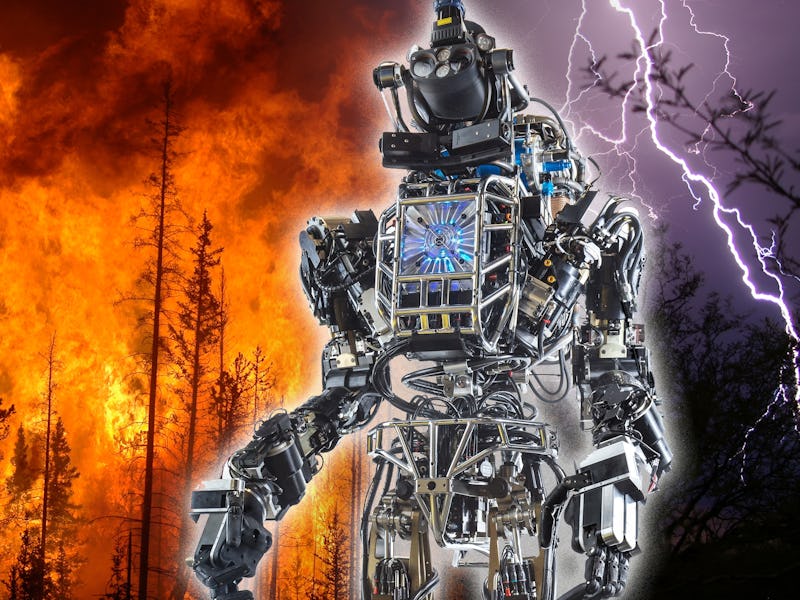Researchers Have Developed an Algorithm to Make Robots Nimble

If you’re not already convinced that the apocalypse is fucking nigh — be your conviction a product of advances in artificial intelligence, climate change, or the 2016 United States election — just wait till you see the Atlas robot’s newest trick. It can traverse “partial footholds,” which really just means that it can track you down no matter the conditions: burning rubble, flooding river, your untidy bedroom floor.
OK, so maybe it’s not that serious. Yet. Atlas still hesitates with each step, but its new algorithm — designed by researchers at the Florida Institute for Human and Machine Cognition — enables it to do what formerly could not be done. Now, when it encounters an uneven foothold, it acts like you and me: It places its foot down, tests its weight in a few positions, and then, once confident, burdens said foot with all its weight. If the next step is likewise unstable, no matter: Atlas shall prevail.
A sped-up animation of the algorithm in action.
“Our humanoid projects are focused on enabling our bipedal humanoids [to] handle rough terrain without requiring onboard sensors to build a model of the terrain,” an IHMC announcement explains. It’s just an algorithm. (It’s a bit like if Tesla decided to challenge itself, and abandon radar and other crucial elements of its autonomous technology.) “Our goal is to tackle increasingly more difficult walking challenges.”
Here’s how IHMC explains its development:
The Atlas Humanoid walking over small and partial footholds such as small stepping stones or line contacts. After each step the robot explores the new foothold by shifting its weight around its foot. To maintain balance we combine fast, dynamics stepping with the use of angular momentum (lunging of the upper body). The control algorithm was developed at IHMC, the robot was build by Boston Dynamics.
Atlas is itself a Boston Dynamics robot, a company that Google put up for sale back in March. The poor humanoid has been routinely mistreated by its creators, which — if we’re to empathize with robots — is a little bit sad. But it’s all for science. Or, if not science, it’s all for robotics.
Atlas has been able to do this for a while, now, but the algorithm makes it yet more deft.
The age of sure-footed robots is upon us, which means we’ll shed one tear for the ephemeral beauty of robot failure.